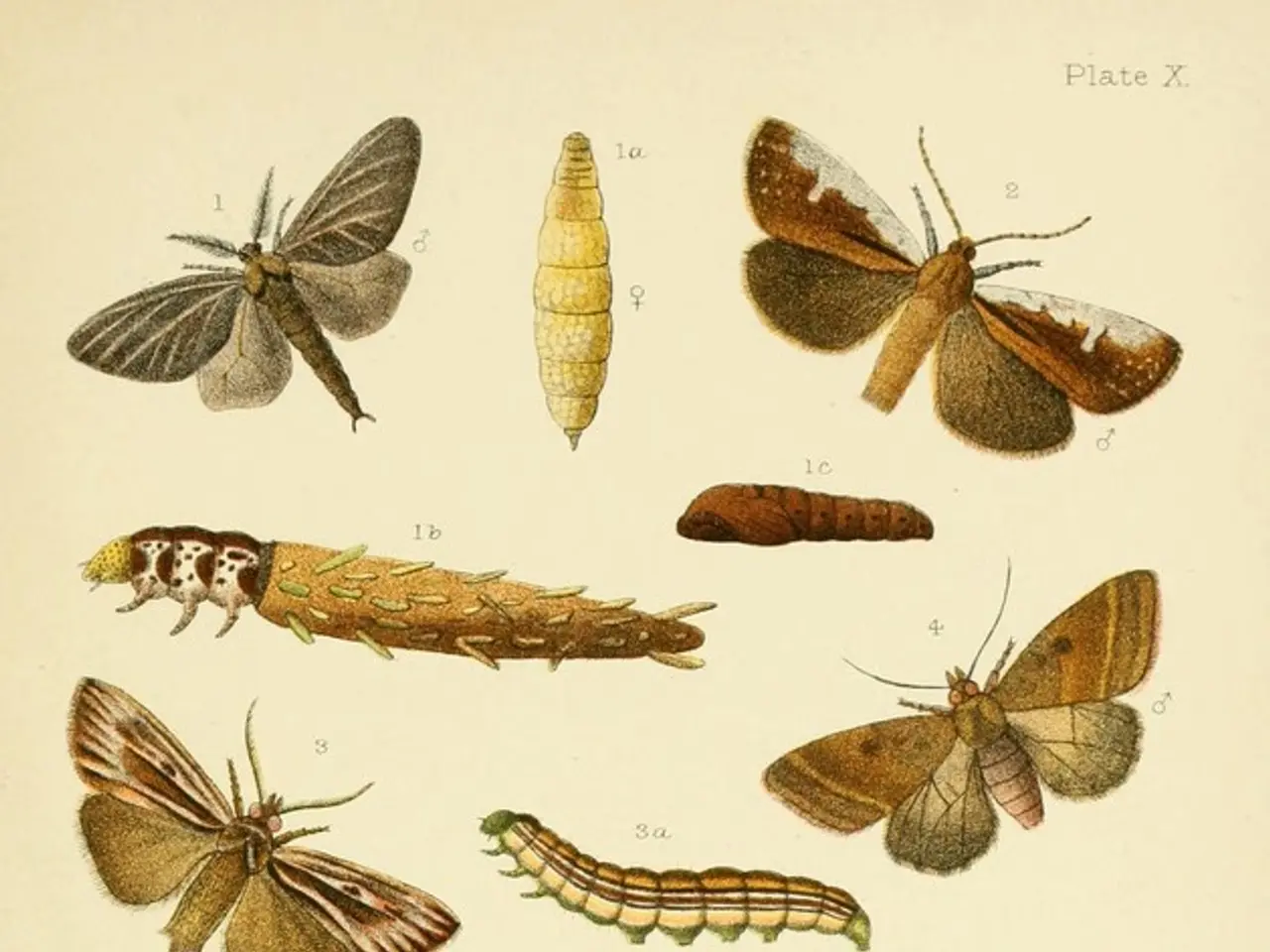Tiny Neutrinos Raise Baffling Size Mystery
In the heart of Germany, scientists at the Max Planck Institute have been making groundbreaking strides in understanding the elusive nature of neutrinos. The KATRIN (Karlsruhe Tritium Neutrino) experiment, housed within a 23-meter-long blimp-shaped vacuum chamber, monitors the radioactive decay of tritium, a hydrogen isotope, to shed light on the mysterious particles known as neutrinos [1].
As tritium decays, it spits out electrons and antineutrinos. Researchers study the energy of the leftover electrons to make inferences about the mass of the missing particles. However, due to their ability to ghost through matter, the antineutrinos cannot be measured directly [2].
The KATRIN Collaboration's efforts have paid off. They have set a new upper limit on the mass of the electron neutrino (or electron antineutrino effective mass), which is roughly 0.45 eV at a 90% confidence level [5]. Previously, limits were around 2.3 eV, but KATRIN has significantly improved this constraint [4].
The precision of this measurement comes from the detailed energy spectrum analysis of electrons emitted near the endpoint of tritium beta decay. Because the neutrino carries away some energy, the kinetic energy of the emitted electrons near the endpoint carries a subtle imprint of the neutrino mass [2][4].
Key to KATRIN's success is its high-intensity tritium beta decay source and large spectrometer, spanning approximately 70 meters in total experimental length. The team focuses on energies close to the maximum decay energy (endpoint), where the influence of neutrino mass is most pronounced on the electron spectrum [2].
The KATRIN team has ambitious plans to push the mass limit even lower. They aim to cut it down to 0.3 eV, and potentially 0.2 eV, by the time the full 1,000-day dataset is crunched [6].
Neutrinos, being the only known elementary particles whose mass remains unknown, continue to be a subject of intense scrutiny in the scientific community. Their mass could offer profound insights into the universe's laws, potentially resolving questions about how well elementary particles cooperate with the Standard Model [7].
Intriguingly, neutrinos may be emitted by interactions between matter and the cosmic microwave background, the oldest visible light in the universe [8]. This connection further deepens the mystery surrounding these particles.
As the KATRIN experiment continues to probe the unknown, physicists are already looking towards the future. A new and improved detector, KATRIN++, may be required to measure the neutrino's mass with even greater precision due to its small size [9].
In the meantime, trillions of neutrinos continue to pass through a human body every second, reminding us of the invisible forces that govern our universe [3].
References: 1. KATRIN Experiment 2. KATRIN: Precision Measurements of Neutrino Mass 3. Neutrinos 4. KATRIN Collaboration: Precision Measurement of the Neutrino Mass 5. KATRIN Collaboration: New Upper Limit on the Electron Neutrino Mass 6. KATRIN Collaboration: Prospects for Improving the Neutrino Mass Measurement 7. Neutrino Mass and the Early Universe 8. Cosmic Microwave Background 9. KATRIN++: The Next Generation Neutrino Mass Experiment
- The future of technology in the realm of physics could be revolutionized by the KATRIN experiment, a groundbreaking research conducted at the Max Planck Institute, as it works to understand the elusive nature of neutrinos.
- A significant stride in this pursuit is the KATRIN Collaboration's recent measurement of the electron neutrino (or electron antineutrino effective mass), setting a new upper limit of roughly 0.45 eV at a 90% confidence level.
- In an effort to push the mass limit even lower, the KATRIN team aims to achieve values as low as 0.2 eV once the full 1,000-day dataset has been analyzed.
- The findings from the KATRIN experiment could potentially offer profound insights into the universe's laws, resolving questions about how well elementary particles cooperate with the Standard Model.
- The subject of neutrino mass continues to be a hot topic in the scientific community, with trillions of neutrinos passing through a human body every second, a testament to the invisible forces that govern our universe.
- As advances in science and technology progress, a new and improved detector, KATRIN++, may be required in the future to measure the neutrino's mass with even greater precision due to its smaller size.




